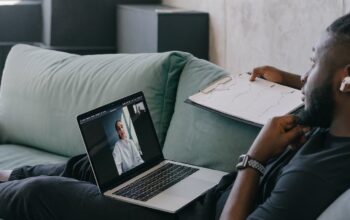It was interesting to note so many network neutrality supporters yesterday who were upset the rules did not go far enough to extend to wireless and later read them lamented about how the rules will harm minorities first and foremost.
Representative Maxine Waters came out this morning saying that the rule could create a digital divide because according to Pew studies Hispanics and Blacks get broadband services via wireless at a higher and disproportionate rate compared to Whites. Further, a July 2010 report from the Pew Internet and American Life Project on Mobile Access which said that African Americans and English-speaking Latinos continue to be among the most active users of the mobile web using a phone or a laptop and wireless access.
The logic then follows that perhaps without as strict an open internet or network neutrality rule imposed on wireless netowrks as is imposed on landline network operators, wireless networks may suppress content delivered over their networks, thereby disadvantaging minorities?
Okay, I hear that argument, but how about we get to the business of getting more people with access to broadband services in the home, in the first place?
Certainly, a mobile phone cannot be a substitute for broadband in the home given that many applications cannot be successfully navigated on a mobile device and that some video content cannot be viewed properly on such a small screen. Furthermore, it would indeed be very unfortunate if minorities were relegated to experiencing broadband from what some have called a second-tier class.
There are a host of broadband services available to help people who may be in search of job opportunities or education to advance their job outlook and to help them look more attractive to an employer; and to assist those who re without access to adequate wellness, maintenance and preventative health care options and could benefit from broadband telemedicine opportunities.
Even the Joint Center for Political and Economic studies admitted in their findings that minorities are more likely to access broadband via their mobile devices that it is an inferior method of accessing broadband.
Take for example, these three broadband application uses best done at home: Telemedicine, Distant Learning and Job Searching.
Telemedicine, which includes the follow up, diagnosis and interaction to health professionals for those who cannot travel to a health facility because they are immobile, are physically distant from the nearest health facility or simply cannot afford an in office visit. As one could imagine, for privacy reasons, discussing one’s health with a practitioner is best done from the comfort and privacy of one’s own home, and not in a library or community center where many low income residents and those without in home broadband access go to get online.
Similarly, distant learning, taking an on-line training course, or a series of webinars or other training videos is best done from a location where a person isn’t limited by time constraints. Taking advantage of such programs is also best done from a home computer where one can spread out their work, pause and return to the instructions when life interrupts, as it so often does.
Finally, for anyone who has ever combed through a paper want ads, it is an undisputed fact that job hunting is best done in an environment where one can spread out the paper, circle those jobs that they may qualify for and can easily scan and compare various ads. The online version of job searching is no different. Many employers these days allow applicants to upload their resume, fill in electronic forms, and to access postings and links online. If a user is not done filling out a form, she may want to book mark it, save it to come back to later or to access later to compare to other job postings. None of these functions is easy to do on a mobile device.
This brings me to what several civil rights organizations have been advocating for all along. The push should have been on increasing at home adoption and bringing costs down for those Americans who do not yet have access. One way to do that is through tiered pricing for new adopters to lower their cost of adoption. However, the term tiered-priced has become such a dirty word because those who use a lot of bandwidth and capacity see their prices going up. For someone who is yet to get online, a drop in price could be the business of getting at-home broadband access or not.
The argument that today’s low volume user is tomorrow’s high volume user is understandable, but that is an argument for an environment where we have near ubiquitous adoption which we don’t have now and not necessarily by default but by choice.
With the FCC putting the network neutrality issue aside, temporarily anyway, it opens up the avenues for work on adoption.
These issues really only matter for those who have broadband in the first place.
Jay Jay Ghatt is also editor at Techyaya.com, founder of the JayJayGhatt.com and JayJayGhatt.com where she teaches online creators how to navigate digital entrepreneurship and offers Do-It-For-You Blogging Service. She manages her lifestyle sites BellyitchBlog, Jenebaspeaks and JJBraids.com and is the founder of BlackWomenTech.com 200 Black Women in Tech On Twitter. Her biz podcast 10 Minute Podcast is available on iTunes and Player.fm. Follow her on Twitter at @Jenebaspeaks. Buy her templates over at her legal and business templates on Etsy shop!


